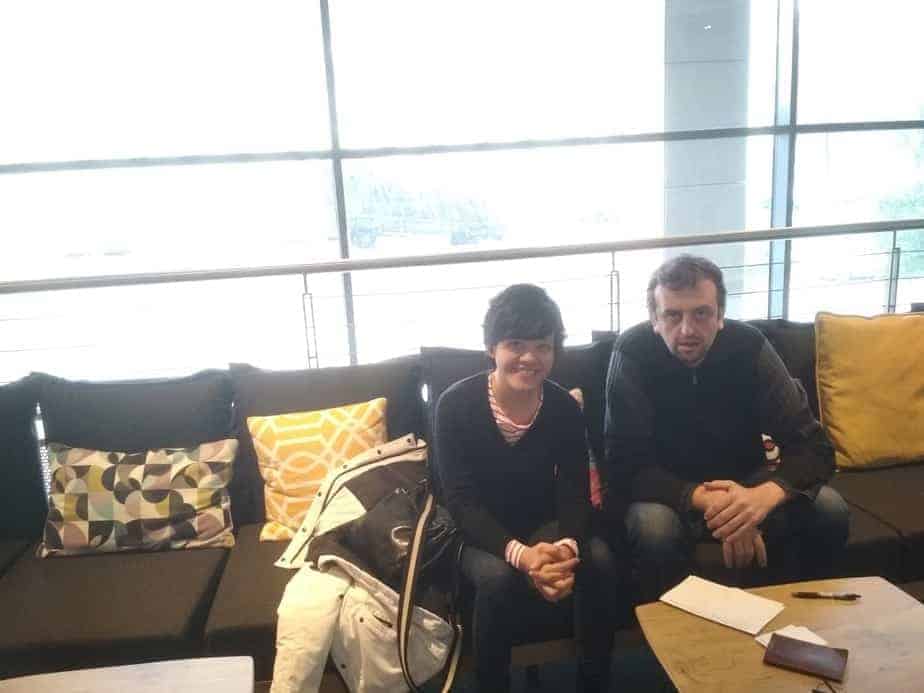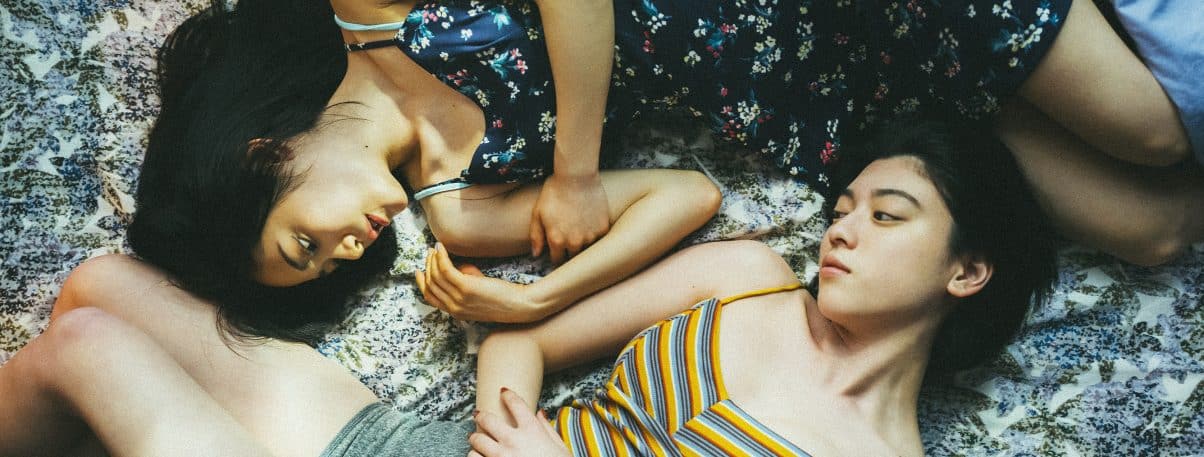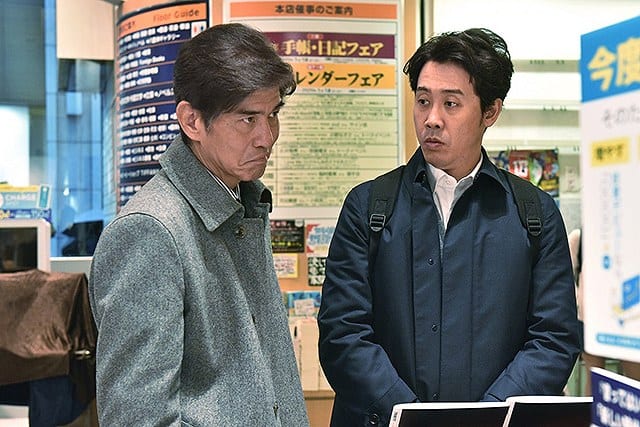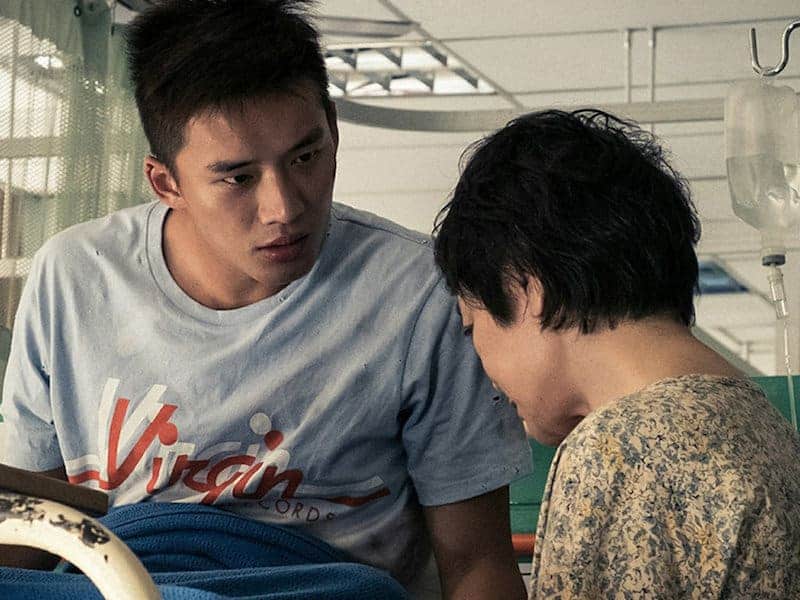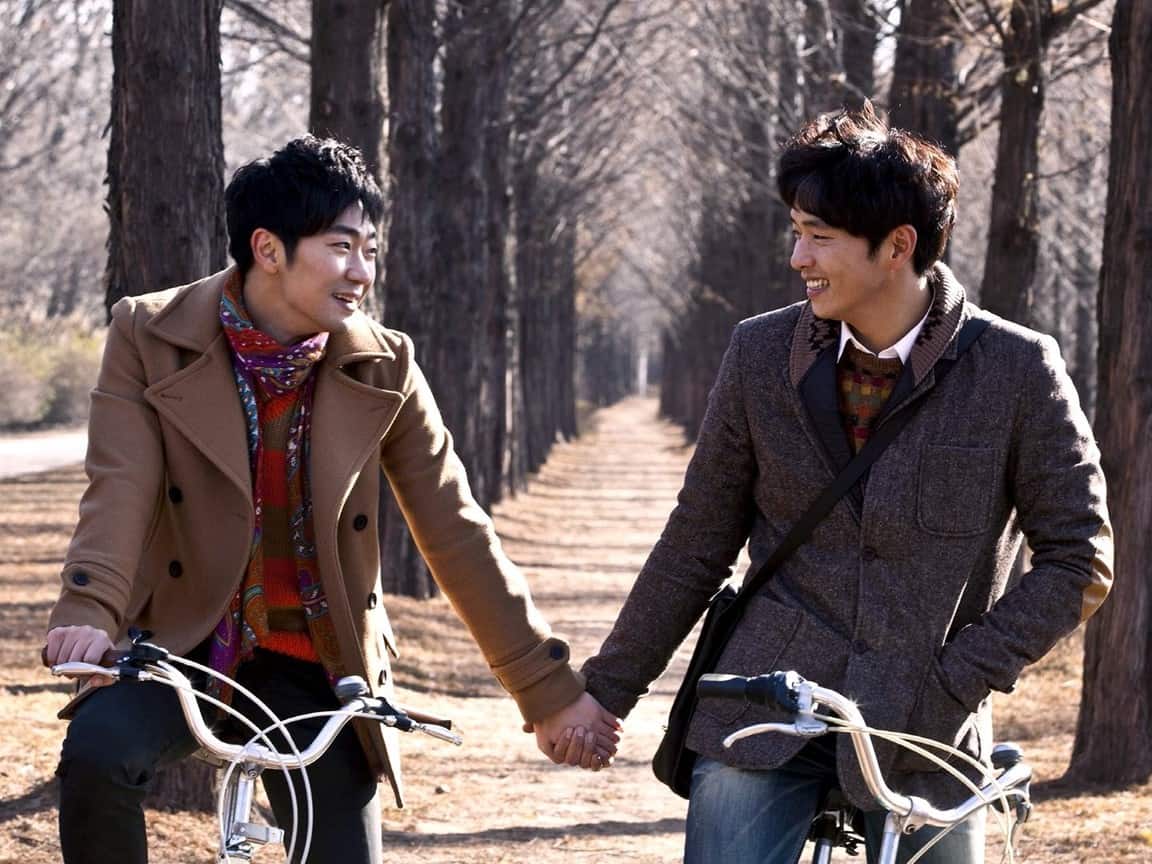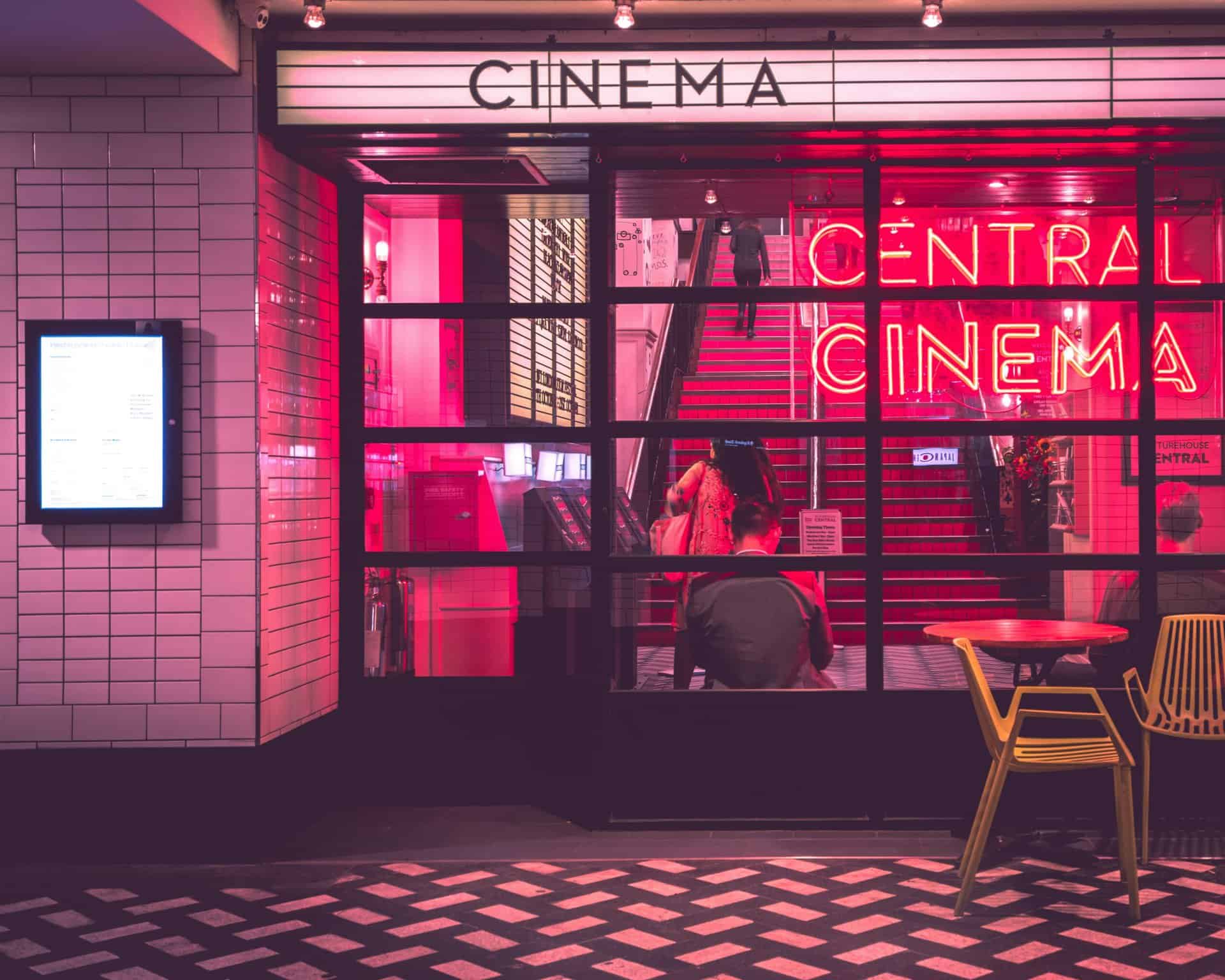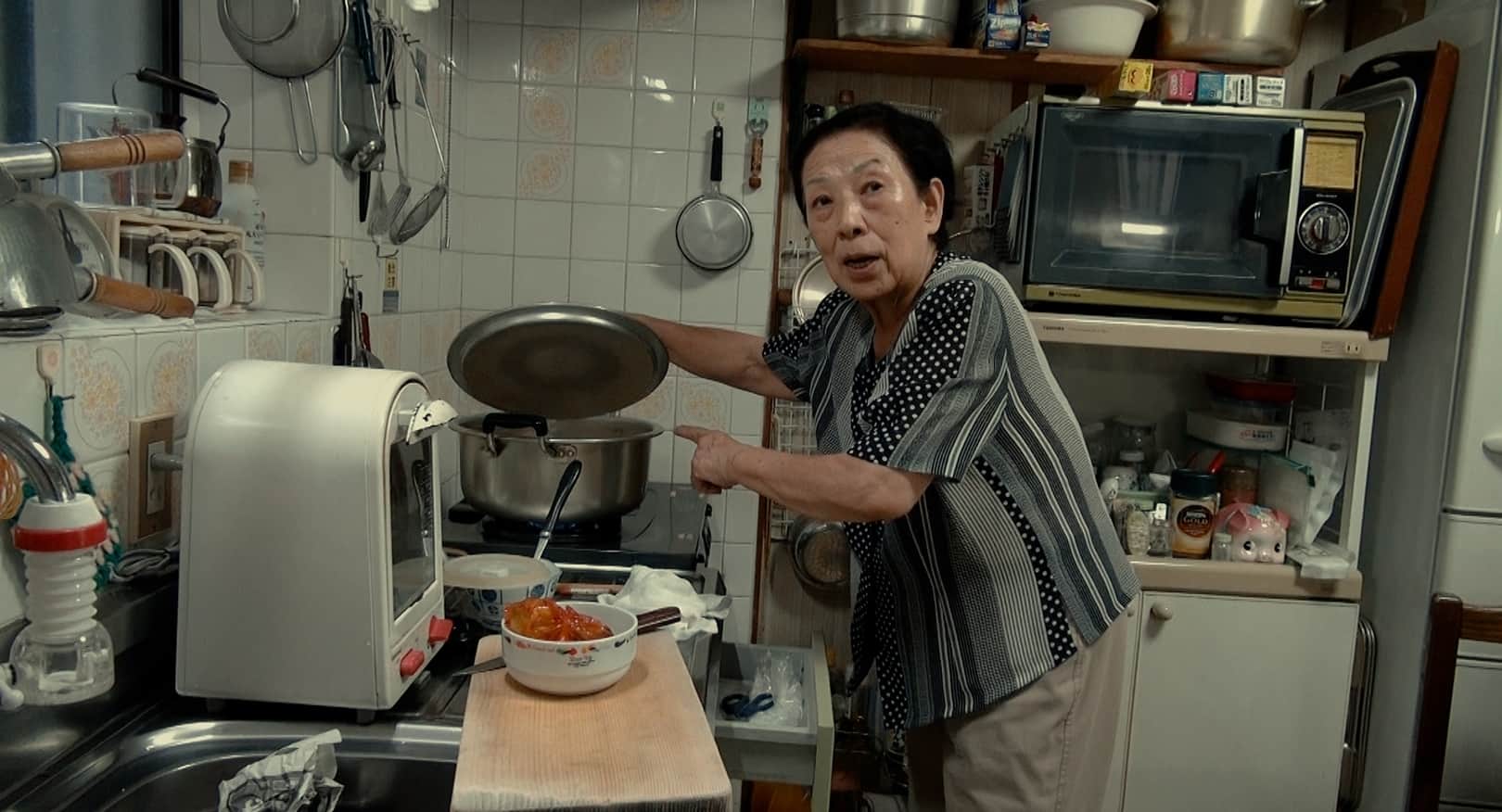Born in Jakarta, Mouly SURYA (b. 1980, Indonesia) is considered one of the most promising female filmmakers in Indonesia. After graduating from Swinburne University, Melbourne with a BA in Media and Literature, Surya obtained an MA in Film and Television from Bond University, Queensland. In addition to making films, she also taught a directing class in Jakarta. Her debut film, “Fiksi”, won numerous awards including Best Director at JIFFEST 2008. It premiered internationally at the 13th Busan International Film Festival.
“What they don't talk about when they talk about love” (2013) was her second feature. Before its theatrical run in Indonesia, the film screened at various international film festivals including the Sundance FF, the Hawaii FF and Karlovy Vary FF, among others. The film received the NETPAC Award at the International Film Festival Rotterdam in the Netherlands, was nominated for Best Feature Film at the 2013 Maya Awards, and was also nominated for Favorite Film at the 2014 Indonesian Movie Awards.
“Marlina The Murderer in Four Acts” is Mouly's first international co-production, including partners from France, Malaysia and Thailand. The film premiered at Director's Fortnight this May and won the NETPAC Award at Five Flavours.
On that last occasion, we speak with her about the film, her life and career, Indonesia its people and its customs, and let's be frank, about almost everything.

You were born in Indonesia, but studied in Australia. How did that came about?
I was born and raised in Jakarta and when I was about 18, my family decided to send me to Australia, where one of my sisters has also studied. I studied media and literature in Auburn for my bachelor. There is a large Indonesian community in Auburn and some of them make amateur films, not exactly for Australians but mostly for Indonesians, who are a lot. During my last year ,I was involved in that and then at the time when we were filming, I found out I was interested and decided to do my masters in filmmaking. So, I moved to the Golden Coast to a film school there.
Apart from being a filmmaker, you also teach. Can you tell us a bit about this part of your work?
For about 5 years, from 2011 to 2014, but not anymore. I was teaching script writing and directing in a local film school, but it took too much time, and when I was trying to focus myself on Marlina, I couldn't do it anymore. Now I am just supervising thesis films, but just once or twice the last two years. But all my students graduated anyway, so… (laughs)
“Marlina” is an international co-production including partners from France, Malaysia and Thailand. How did that occur?
At first, when we were developing Marlina, we tried a couple of project markets first, but also got funding from Japan, because I was an alumni in Tokyo Talents in Tokyo FILMex and so I was eligible for funding from them. We applied and we got it and then we went to some project markets in Busan and then finally in Cinefondation in Cannes. At the time, we were looking for a French co-producer and we re-met Isabelle Glachant, after Busan, and we finalized our agreement for co-production after Cannes, in 2016. Then we applied for Cinema Du Monde by CNC, for production funding, and this was quite tricky because we had to compete with known filmmakers, big names, but we got that fund too, and I think that was one of the most important co-productions.
After we shot the film, we still needed some money, and we had a connection with Astro from Malaysia, who distributed my second film for their Cable TV and they had an interest in financing some Indonesian movies. So, we met them and they were very interested when they saw the rough cut of Marlina and decided to also co-produce. Also, Hook Originals, which is a live streaming company, like Netflix, in SE Asia, decided to have a portion of the film as well. And then is Thailand, with Anocha, which is a friend of mine and she emailed me and asked about Marlina, and she just has a new platform for funding/ coproducing in Thailand, Euprin, and “Marlina” is one of their first projects.

Why did you decide to shoot a film very similar to a western? What inspired you to write the script?
The story is by Garin Nugroho, a prominent filmmaker in Indonesia whom I met him at a very random moment, during a film festival and he approached me and said, “I have this idea, and I really want a female director to shoot it, and I thought of you.” The next day he sent me the story and I showed it to my producer, Rama Adi and he fell in love with it and told me that he thought that this should be our third film. I was reluctant at first, because it was going to be the first time writing something that it was not originally my idea, and I was hesitating a bit and, actually, it took me a while to really get into the story, but when I flirted with the idea of a western, the story made more sense.
As I said before, I was born and raised in Jakarta, and when I was about to grow up, my parents send me to Australia, and I actually grew up there, since I returned when I was 25. So, my first two films are set in a very urban setting, which, somehow, feels more relatable to me, in contrast to “Marlina” which felt the opposite, since I don't travel at all to other parts of Indonesia, as much as I wanted to. So, by making it a western, the story felt more relatable to me and I felt it would be more accessible to the audience, whether it was the local audience or the international one.
In general, the women in the film are oppressed, by a number of different factors (husbands, mother-in-laws, customs). Is that the case in Indonesia today?
We have some female filmmakers in Indonesia today, and a lot of producers actually, and really depends on the situation of each person. In my case, my husband is actually my producer, of all of my three films. We argue all the time about our films, but I don't know if this would count as oppression (laughs). We work as partners, but I know this is not always the case, but all the female directors I know have very supporting partners. In the first place, you don't decide to become a director out of the blue, but when I teach female students, I do feel that, and I don't know if this is a result of oppression or from our own culture, they are not as confident as their male counterparts. For example, I used to have this class where I would bring in actors, and the students had an exercise where they had to direct actors in front of everyone. I understand this is a nerve breaking experience, especially for beginners-directors, but what I saw is that, although the female filmmakers had the most preparation, they lacked the confidence. And actually, this the trick when directing actors, to have confidence in what you do, and the male students had more confidence, despite the fact they lacked in preparation.
I think it has to do with the way we are raised in the family, since the males are raised as the breadwinners, the leaders, whereas the women stay more in the background and school is less important for women than the men. The school I was teaching is quite expensive to get into, and the students are a selected few, but the way I see it, it is a result of the way our culture has shaped us, and I think this applies to a whole other Asian countries: male are raised differently, although there is not a kind of obvious oppression to the women.

In order to face their difficulties, the women in the film turn to violence Do you think that violence is a solution? In general, what is your opinion of the depiction of violence in cinema?
In the case of my film, it is very different, since we are in an extreme situation, where any other option might not be available. And the way I treat violence in my film is as something fitting in that setting. But in real life, I am not going to support violence, but what the robbers are doing to her is actually violent, and of course, beheading is an extreme way to fight back (laughs).
When we decided she beheads someone, the idea came from the whole concept of the beheading, a very primitive way of how people are. Not only in Indonesia, but all over the world, at older times, there were always stories of beheading, even regarding the slaughtering of animals, therefore there is something really primal about that. That is the message I wanted to show. Therefore, the beheading in the film is more about that than me supporting violence. I did not want to dramatize it, I wanted to show the matter-of-fact violence, that is just there, like when I saw the videos of the ISIS beheading
The lady she meets in the car carries two horses for her nephew's marriage, stating that it will not take place if she does not deliver them. Do such customs still exist in Indonesia?
Yes there are. It is a funny thing, because we just released the film in Indonesia, and for Indonesian this scene is so common, but for international audience this was actually a funny scene, they laughed, it is a cultural gap I would say. It is quite common, especially in this particular island, Sumba, they call it Belis, and basically, the woman is being bought for animals, in exchange for the daughter. It is the pride of the family, that this girl was bought with a lot of horses. It is a very popular custom and when we were shooting the film in Sumba, I saw a very big celebration where the two families were discussing how many horses it would take, they have to have an agreement before the wedding, and that is what the scene is referring to.
But in other parts of Indonesia, like Java, there is a thing we call kind of a “marriage gift” and it is a symbolism for us. For example, in my wedding, we had some kind of mount of money that was metaphorical, because the amount of money is actually the date of the wedding. So, it is a kind of symbolism but it is still there. It is not like in the Islamic world, but it is in our culture, to be bought for something. (laughs). The funny thing is that we kept the money, me and my husband, but in Sumba it is different, the families keep the presents, but it depends on the family, some are more traditional.
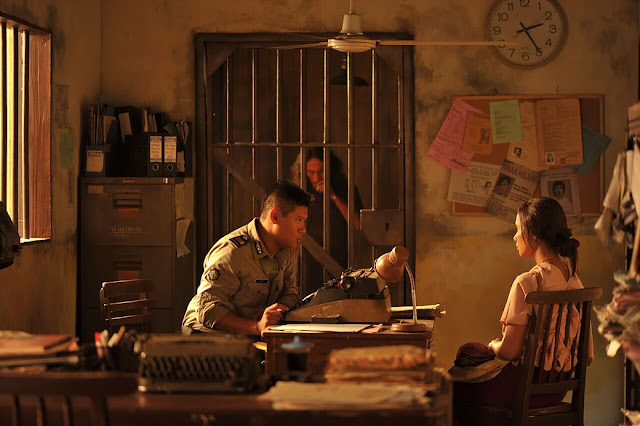
When Marlina arrives at the police station, she has to face prejudice and bureaucracy Is that the case in Indonesia at the moment?
The rate of crime in Indonesia is not high, but this is because there are so many unreported incidents. And the reason for that is that we don't really believe it is going to be solved if we go to the police. It is not really our modus operandi when something dangerous is happening, to call 911, we don't do that. I don't know why.
So, what is the first thing that you do?
We try to call our family probably, ask for some help or scream, but we don't call the police. Back in the 80s, when my house was robbed, my father pretended to call the police, so the robbers would hear and try to walk away. But in the film, we are talking about a policeman in a rural area, which is kind of tougher, because they are lacking resources. It is very different with the ones in Jakarta, but still, we don't have that kind of trust with the police, like the Americans or the Europeans, about their police protecting them. The bureaucracy is so complicated that you are probably going to lose money (laughs). Therefore, what we do in Indonesia, is, when something bad happens, we usually let it go, instead or reporting it to the police. It is actually mentioned in the film, when Novi talks to Marlina, and asks her, “Why are you going to the police, you are just going to get in more trouble”. This scene shows how we perceive the police in Indonesia.
As Marlina is walking, the headless corpse of the man she decapitated seems to follow her. Can you tell us a bit about this concept?
It was one of my earliest ideas, we came up with that, it is not part of Garin's story. I wanted to add that because I think, when Marlina beheads the man, some of the story of Marlina ends there, but there is something that changes in her, which is very hard to visualize if you don't have that headless man. It is probably guilt, but it is definitely something that changed in her, something major has happened in her life, and I don't think she would ever be the same again. You could say it's a ghost, but it is more something that happened within her, and left a trace in her character.
Why did she decide to keep the body of her dead husband in the house?
It is actually another of the customs of the people in the island. When someone from the family dies, they have to have a kind of extravagant funeral that takes a lot of money. So what they do is keep the body in the house for three months, and then they have family meetings, which takes money as well, in order to decide when to do the funeral. If they don't have the money, they will still keep the body, mummified as is the case in the film, but after a few months, they will usually put it in a coffin, but still keep it inside the house. Actually It can be held for up to 30 years, because I saw one in a coffin, which was kept in the middle of the house. I took the liberty of putting it in the corner (laughs).
There are some customs in Indonesia that have that, not just in Sumba, because of the festivity of the funeral, they have to get a lot of money to do it. In Toraja, they do that as well, and it is actually a very famous tourist attraction to see a funeral. In Sumba, they have to move a very big stone in order to bury the body, and that is why they need a lot of money, and they also need many animals slaughtered to be eaten by a lot of people.
Yunus Pasolang's cinematography is impressive, both in the interiors and the outdoors. Could you tell us a bit about the way he shot the movie and your cooperation with him?
I have worked with him in all my films and in a very early stage of the production, we decided we are going to shoot day shots in Sumba, and I kept that in mind when I was constructing the script, how to make it as effective as possible. The island is not that far from Jakarta, just one flight away from Bali, which is just one hour away from Jakarta. However, the access to the island is horrible, particularly if you bring a lot of stuff, because you have to bring a truck and then use the ferry, so it is quite expensive, logistically, to shoot in an island like that. Therefore, we tried to make it as simple and as effective as possible in the island, and have the interiors shot in Jakarta.
So, I talked to Yunus, for example about our decision not having camera movement in the film at all, and I also gave him some paintings, for example the Judith and Holofernes, and Yunus suggested Caravaggio paintings for his lighting. There was much discussion, but during the shootings, the mutual trust we have established from our previous films came to the fore, since we can inspire each other without too much communication about how to do things. Sometimes, I make a short list and he will recommend some locations and recommend some shots. On the set, he will see the situation and he will try to place the camera based on what he thinks I want, and we will start from there. For example, he will give me a frame and then, I will work from it or I will tell him how a scene will be edited or how it will be constructed, and he will try to look at it from a production point of view, how to make it effective.
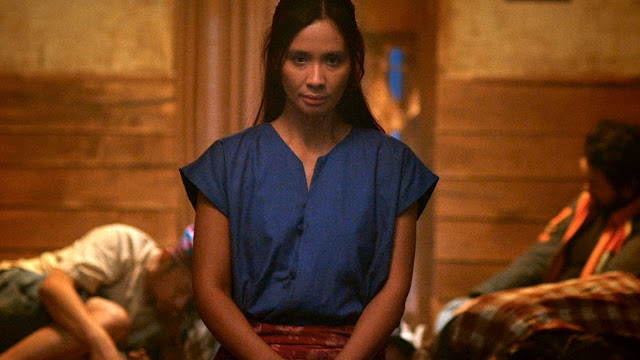
Marsha Timothy is great in the protagonist role. Can you tell us a bit about the way you guided her for her role?
We approached her very early, during the drafting of the script. The character of Marlina is essential of course. So, we approached her with the synopsis and talked about the possibility of working together, but we told her we have not decided yet, and that we will probably look at other actresses as well. The context is that I have known her for quite some time, she started her career when I was still an assistant director and actually, I had that capacity in one of the films she was the lead actress, and I cast her. Actually, I directed her in the casting room. However, it was Rama who was more interested in her, and told me that she has this look, this sensibility and this aura that is not stereotypical to this kind of film, but we felt that it might work. We waited a bit to tell her that she got the part, but we did not have any audition. After a few months, we decided to tell her that we didn't actually approach any other actress, we kind of feel that she is the one. What she said, about how she auditioned for the part was interesting, because we had this interview and she said that “probably this was my audition, they just wanted to see how much I wanted the part”.
I think that, because of the time that was given to her, she had quite some time to see how the character develops, since, whenever I would write a draft, I would send it to her and she would read it. We didn't talk about, but this continued for a year and a half, so she had a lot of time to contemplate with the part. I also think it is interesting that I never explained to her what kind of character Marlina is.
What always happens in the industry is that you will have some kind of biography of the character, and I find that this tactic does not work for me, because I do not think it is very organic, me writing a biography and sending it to the actor, and she trying to become that character. I think it is best to create something together, because it would be different if it was Marsha Timothy in the role or, for example, Nicole Kidman, since they will have their own self, in a way, in the role. I think that is what it makes directing actors interesting, to feel that concept. So, usually, I don't really try to explain what the character was before the film and what after the film, but I will tell little details about the character that would be interesting for the actor to develop from. Especially Marlina is a mystery, in a way, in the film, you have to figure your way around her, as an audience, and that mystery quality is what I wanted to connect, to keep with Marsha, so we never really had a lengthy talk. Our only lengthy talk about the character was before the shooting of the film, when we talked about the grief that is in Marlina. And I had lost my father at that time, and she has also hers some time ago and we kind of connected about that thing and that found its way to Marlina.
What about the rest of the casting process for the film?
Dea Panendra, who plays Novi is a very new actress, this is actually her first film, and she was recommended by our casting director. Also, I saw her in a YouTube series that is kind of a “The Next Supermodel” where they have these videos of people who are going to win a part in a future film, and she is one of them. She does not win the part but I kind of remembered her from that. I did a little audition with her and she got the part. Regarding Egy Fedly as Markus, I worked with him in my first film, so we decided to choose him. Yoga Pratama who plays Franz came a bit later in the production.
Where there actual auditions?
Well, no, he is a seasoned actor, he was actually a child actor, I have seen many of his films, and I knew that he could do it. I tried to audition him a couple of times for my earlier films, but it had not worked out.

What is your opinion of the Indonesian cinema at the moment?
It's a toddler, I would say, because our industry just produced a few films during the 80's and the 90's and the films that got produced just went to foreign festivals and were not released in the country's cinemas. However, after 2000, this changed and a couple of filmmakers tried to shoot films that were addressed to the local audience. But then, we don't have any distributors in Indonesia, because we only have a very few exhibitors, so the producers came to the exhibitors directly, and filmmakers are actually distributors as well, which creates a luxury other countries don't have but also a lack of sustainability. Because you will get some successes occasionally, but it is difficult to maintain because the success does not come out of a system but from an x-factor. When an industry has a system, there is still the X-factor, but when there is no system, this factor becomes much bigger. So, some years there are very good films and some years very bad, and the same applies to sales.
The thing is we are lacking the human resources in the industry, we only have a very few local film schools. Maybe the next generation will change that but my generation, especially the ones who were born in the New Order era, during the Suharto Regime, did not know how to speak their mind. When I went to Australia, everyone expressed his or her opinions and I found it very hard to adapt to that because I was not used to it. Indonesians of my generation, when they are in a class, they usually just listen, take notes and do not really express any opinion, we are just being dictated in a way and it is kind of hard to have creativity from that. I remember in my elementary school, in art class, we had to draw the same things. It was actually an obligatory drawing of the Suharto regime to draw two mountains, a farmer's house, a farm and a road basically. I can actually draw it to you very fast (laughs). From all over Indonesia, if you find someone my age, they would have done that. And that thing actually does something to a person. Now I don't actually have any problem expressing my opinion, but in Indonesia, many people have trouble doing so.
Which are your favorite filmmakers/movies?
Abbas Kiarostami, Michael Haneke, Hirokazu Koreeda, when I was in school I was crazy about Stanley Kubrick as well, I still am but there are no new movies from him (laughs).
What about your future projects?
Not at the moment, we are still at a very early process of trying to decide what project we are going to do next. Because, as I said, Indonesian producers have to go to cinemas directly and we are currently releasing Marlina in Indonesia and our hands are tied with that.


